Hands-On: Pantech Hotshot, Jest 2, and Caper
Oct 11, 2011, 3:32 PM by Eric M. Zeman
updated Oct 12, 2011, 2:31 AM
Pantech had a handful of its newest devices available at CTIA. We spent a few moments with them. Here are our initial impressions.
Hotshot
The Pantech Hotshot is a touch-based feature phone that runs Verizon's non-smartphone touch user interface. It is an inexpensive option for those who want a touch phone, but don't want to spend a lot of money on the device or the data plan.
It features a 3.2-inch display and a 3.2-megapixel camera with video capture. The Hotshot has three home screens that can be customized with user-preferred content and apps and a full suite of messaging and social networking software. The Hotshot includes apps such as the Opera Mini browser, in addition to niceties such as Bluetooth and GPS for navigation and such.
The Hotshot is incredibly thin and light. In fact, it hardly has any weight at all. The tiny footprint will certainly be appealing to some potential users.
The volume toggle is on the left edge, and has a nice shape to it. It is easy to find, and very good travel and feedback. The 3.5mm headset jack is above it. On the right, the Hotshot has a microUSB port, screen lock/power button, and a camera button. I thought these buttons were a bit on the small side, and didn't quite provide the amount of travel and feedback that I like. Given the importance of the power/lock button, this could be problematic.
The display is ho-hum in quality and pales in comparison next to the latest Android smartphones. For what it is, though, it still comes across as clean and bright. There is a single, large button below the screen for jumping back to the central home screen.
The feature phone user interface is similar that seen on LG's touch-based feature phones. It has three home screen panels that can be populated with widgets and other shortcuts, while still providing access to the phone app, contacts, and so on. It was reasonably responsive and I didn't notice any lagging.
The Pantech Hotshot is a decent little touch phone for the user who wants in inexpensive touch device.
Jest 2
The Jest 2 is a follow up to 2010's vertical sliding messaging device. It has a small footprint when closed, but still provides a full QWERTY keyboard for pecking out messages.
It is a bit squat looking, and a little too thick around the waist. It's a small, rounded phone with an array of buttons up front. The phone has a nice weight and a solid feel to it. The slide opens with a loud, spring-loaded snap. The back is textured and easy to grip, and most of the phone is coated in a glossy, but not too cheap-feeling plastic.
The display on the front looks reasonably good, and held up under the glaring lights at the Pantech booth on the show floor. Beneath the screen, there are five buttons and a d-pad for controlling the device. The d-pad has a nice feel to it and I liked the travel and feedback. It is about the size of a nickel. There are function buttons to either side, which have good travel and feedback and are easy to find.
The remainder of the buttons have been built into the bottom edge of the top half of the slider. I didn't care for their positioning. They may be really easy to reach and use when the Jest II is open, but when closed they are awkward to reach without dropping the phone.
The keyboard itself feels really good. The Jest 2 manages to avoid a problem often found with sliding keyboards in that the keys have a very distinct shape to them. it was very easy to tell them apart as you use the phone, and I found the keys to be firmly planted on the front of the phone. They offer good travel and feedback.
The microSD port, volume toggle, and voice command key are all on the left side of the device. Both keys are a bit small, but have really good travel and feedback. The microUSB port in on the right side of the Jest 2, with the 2.5mm headset jack below it. The lock/power button is also on the right side, as is the dedicated camera button. Both buttons can be found easily and have good travel and feedback. Thankfully, they are positioned far enough apart that you won't accidentally press one when you mean to press the other.
As for the user interface, it is the standard Verizon Wireless feature phone interface that's available on a million other phones.
For the messaging fanatic, I suppose the smallish footprint and solid keyboard are appealing.
Caper
The Caper is small, monoblock messaging phone that has a full QWERTY keyboard.
It is lightweight and feels good in the hand. The overall fit and finish is somewhat on the cheap side, and the materials are not of the highest quality. It is put together reasonably well, but doesn't have the tightest build I've seen.
It is covered with buttons. Below the smallish display, the navigation cluster has no fewer than six buttons and the d-pad. They have a good feel to them. The action was a bit stiff, but stiff is better than mushy. The keys have a good amount of travel and feedback, and were satisfying to use. The d-pad felt good under the thumb, and the edge was well defined, making it easy to find and use.
The keyboard felt pretty good, but is short of fantastic. The individual keys have a nicely rounded shape, which makes it easier for your thumbs to tell them apart as you move around the keyboard. They are a bit on the loose side, and have too much side-to-side travel for my tastes. The travel and feedback of the keys was acceptable, but I found the "wigglyness" to be off-putting.
There are tons of bottons on the side edges of the phone. The volume toggle is on the left, and has a tight feel to it. The voice command key is below it. Both buttons have a pleasant shape to them. Same goes for all the buttons on the right side, which include a keyboard lock key and the camera button. I wish the camera button were a bit further away from the lock key, as it is all too easy to accidentally lock the keyboard when you mean to open the camera application.
The user interface is the typical (and crusty) Verizon Wireless feature phone interface. Pick up any off-the-shelf feature phone at your local Verizon store and you'll see what the Caper is all about. It is usable, but badly needs to be updated.
In all, it's not a bad little phone that is probably best used by young teenagers as a messaging device.
Comments
No messages


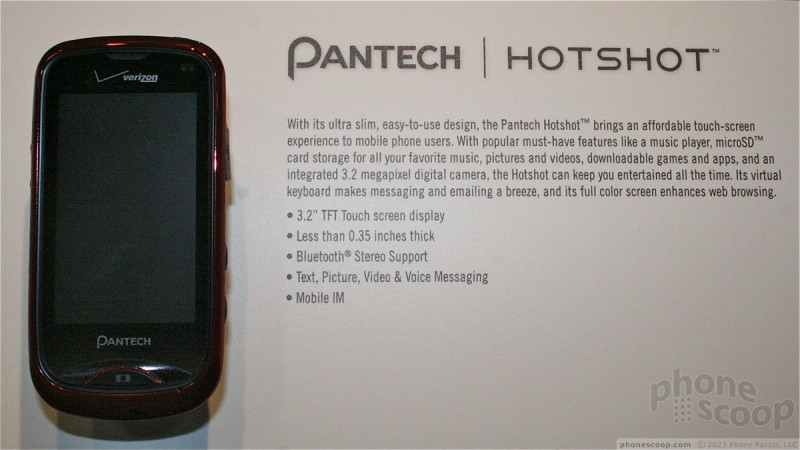







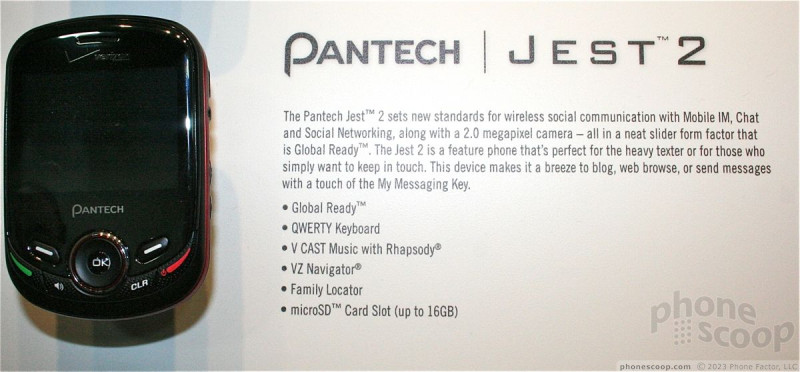











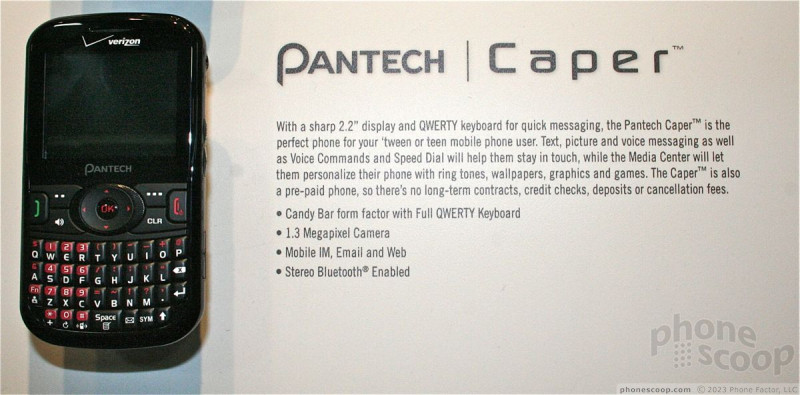








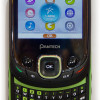 U.S. Cellular Adds Pantech's Verse
U.S. Cellular Adds Pantech's Verse
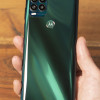 Hands On with the moto g stylus 5G
Hands On with the moto g stylus 5G
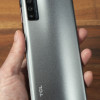 Hands On with the TCL 20 Series
Hands On with the TCL 20 Series
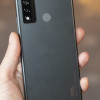 Hands On with the TCL 20 XE and TCL 20 A 5G
Hands On with the TCL 20 XE and TCL 20 A 5G
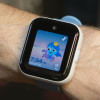 Hands On with the T-Mobile SyncUp Kids Watch
Hands On with the T-Mobile SyncUp Kids Watch
 Pantech Caper
Pantech Caper
 Pantech Jest 2 / Verse
Pantech Jest 2 / Verse
 Pantech Hotshot
Pantech Hotshot


